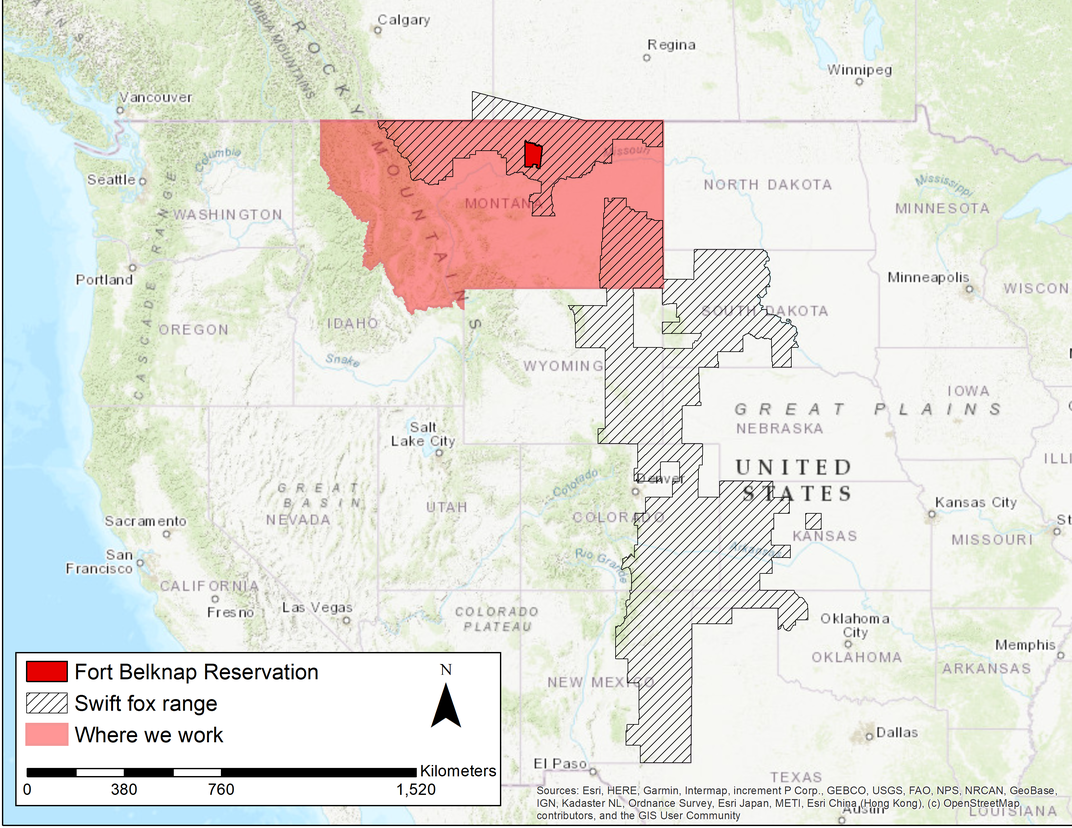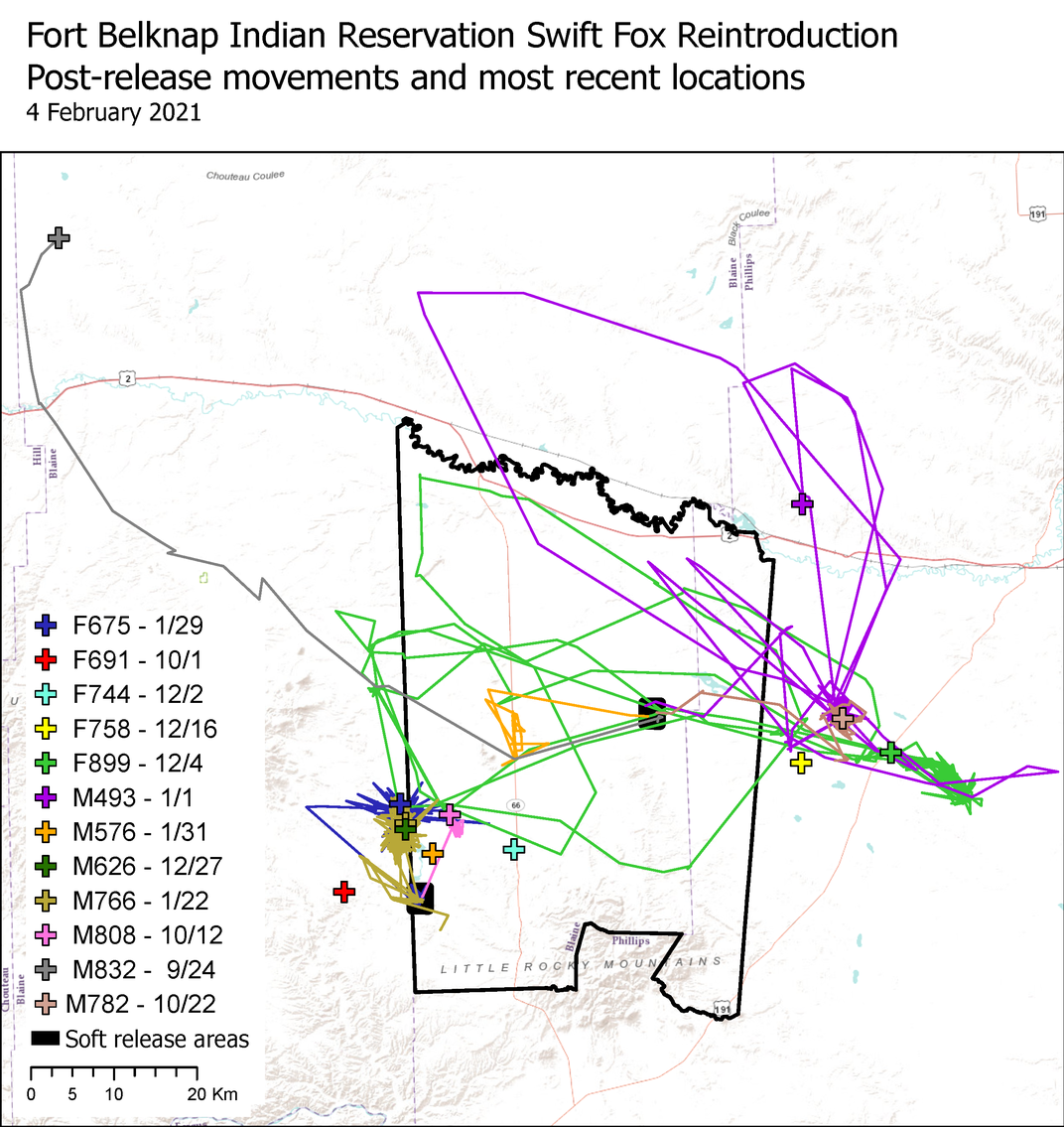Swift foxes are the smallest member of the canid family in North America, with adults weighing approximately 2 kg. Once found throughout the plains of North America, swift foxes now inhabit only a fraction of their historic range. Smithsonian scientists have partnered with the Fort Belknap Community to reintroduce and track swift foxes in the Fort Belknap Indian Reservation.

Height: 30 cm (12 inches)
Weight: 1.4 – 3 Kg (3-7 pounds)
Facts: Swift foxes are commonly associated with native short/mid grass prairie, but they also occupy sage brush dominated landscapes in some parts of their range. Swift foxes eat a varied diet, most commonly including small rodents, lagomorphs, arthropods, birds, carrion and plants.
Conservation Status: Least Concern

The global population of swift foxes is divided into two populations, Northern and Southern, which are separated by a gap of approximately 200 miles. The southern population occupies the core of this species’ historic range, and is descended from swift foxes that survived the population declines of the previous century. In 1983, the Canadian government reintroduced swift foxes into southern Alberta and Saskatchewan. Swift foxes have since dispersed from these areas and established a population in northern Montana by 1996. In early 2000’s, two additional reintroductions were carried out by Blackfeet Nation and Assiniboine and Sioux Tribes (Ft Peck). The most recent data available suggests that this population contains approximately 870 individuals.

A collared swift fox runs across the grasslands of Ft. Belknap Indian Reservation after reintroduction.
Over a five year period (2020-2024), up to 250 swift fox will be translocated to Fort Belknap with the help of the Swift Fox Reintroduction Working Group, which is led by representatives from Native American communities, federal and state agencies, and NGOs.

A swift fox with a fitted with GPS tracking collar in soft release pen ahead of reintroduction.
Foxes will be sourced from three robust wild populations found in Wyoming, Colorado, and Kansas. Each swift fox is fitted with GPS collar capable of transmitting data over the cellular network, or satellite communication and monitored for a minimum of 12 months. The data is used to track post-release dispersal and survival, as well as the establishment of home ranges and natal dens.

Camera traps will be posted at natal dens during the pup rearing season to monitor reproductive success and population density will be monitored using DNA collected from fecal samples.

A swift fox is seen emerging from its den by a camera trap.
Landscape Ecologist
Smithsonian Conservation Biology Institute (SCBI) Conservation Ecology Center
Conservation Biologist
Smithsonian National Zoo & Conservation Biology Institute (NZCBI), Conservation Ecology Center
Ecologist, MoL Terrestrial Program Lead
Smithsonian National Zoo & Conservation Biology Institute (NZCBI), Conservation Ecology Center
Wildlife Ecologist
Smithsonian Conservation Biology Institute (SCBI) Conservation Ecology Center
Head, Center for Species Survival
Smithsonian Conservation Biology Institute National Zoological Park